It seems like fate that this 1994 Holden Commodore VR Ute should appear on our desks here at Barn Finds at this point. The “Coupe Utility,” or the Ute to give it the proper Aussie name, was a staple of the Australian motoring landscape from the moment that the first example appeared back in 1934. The last Holden Commodore Ute rolled off the production line in 2017. Sadly, the Holden brand itself is about to suffer the same fate as that which befell Pontiac. By the end of this calendar year, the Holden brand is to be “retired” permanently by General Motors. That makes the timing of this car feel somewhat poignant. Barn Finder Kyle K spotted the Commodore for us, so thank you so much for that, Kyle. It is located in Cypress, California, and has been listed for sale here at Toprank International Vehicles. You can park this iconic Aussie in your driveway for $17,499.
The Commodore VR was introduced in 1993 and marked the second facelift for the VN-Series that first appeared in 1988. While many cosmetic changes came with this facelift, there were some notable changes under the skin. The most important of these was the decision by Holden to widen the vehicle’s front track. This resulted in a car that was smoother and more stable in corners than its predecessors. While this Ute wears Maloo badging, it is a base-model Commodore. The VR Maloo was a model that was produced by Holden Special Vehicles (HSV). While HSV is a separate entity to Holden, it has a similar relationship as AMG has to Mercedes-Benz. The Maloo Package included a revised grille and front bumper, side skirts, a molded roll bar, and distinctive HSV alloy wheels. The result was a more attractive vehicle, but HSV only produced 156 examples of the VR Maloo Ute. Leaving the cosmetic enhancements aside, the Alaskan White Commodore appears to be in good condition. The paint shines nicely, with no signs of any scrapes or scratches. The distinctive HSV body additions are in good condition, while the panels themselves are free from apparent dings or dents. Rust doesn’t appear to be a problem, although the VR Ute never had a reputation for this type of problem. The alloy wheels are in excellent condition, and I can’t spot any issues with the glass.
One area that will require attention is the inside of the bed. This is usually finished in the vehicle’s body color, but it has received a repaint at some point. The paint is looking pretty rough, but the bed shows none of the dents or damage that could suggest abuse. The buyer might choose to perform a repaint of this area, although another option is worth considering. Many Australian companies produce plastic bed-liners specifically for the Commodore and the equivalent Ford Falcon. These are a robust item that will withstand all sorts of abuse, and fitting one of these is child’s play. They can be found for around US$200, and several companies in Australia will arrange to ship to the US. I can vouch for these liners personally. My daily driver is a 1996 Ford Falcon Ute that is fitted with a bed-liner. I recently removed it to check the state of the bed, and I found that the paint and metal beneath were perfect. The liner’s design means that moisture can’t get beneath it, so rust isn’t a future worry.
The demise of Holden brings to a close an interesting page in GM’s history. Holden generally towed the corporate line, but occasionally the company would go out on a limb. Sometimes this worked, and sometimes it didn’t. The Holden V8 engine was a perfect example of the company’s ability to use the sort of “smoke-and-mirrors” tactics that would make any magician proud. In the early 1960s, Holden could see the writing was on the wall, and management knew that they would need a V8 engine in their product line before the decade was out. The simple solution would have been to import any of GM’s V8s on offer in the US. However, Holden also knew that to do so would compromise local content regulations, so an answer needed to be found. Unbeknown to the powers in Detroit, Holden commenced the engineering development of a unique V8. They chose to develop this engine with capacities of 253ci and 308ci. All of the engineering groundwork was completed, and prototypes were built and tested. It was only then that Holden approached Head Office in Detroit, seeking approval for the project. GM executives were impressed enough to give the project the green light. In keeping with Holden’s objectives, the first uniquely Holden-designed V8 appeared in a production car in 1969. The 253 soldiered on until production ceased in 1984, but the 308 led an interesting life. It underwent numerous changes throughout its life, most of which were to help it comply with tightening emission regulations. Two of the most significant changes occurred in the mid-1980s. The first was to reduce the engine’s capacity to 304ci, which happened in 1985. This was in keeping with the company’s motorsport aspirations, as Australia was dominated by International Group A Touring Car competition at that time. By reducing the capacity by a few cubic inches, the Commodore fitted into a different class within the Group A regulations. The result was a drop of 175lbs to the vehicle’s minimum racing weight. That is nothing to be sneezed at. The second change was the replacement of the venerable carburetor with electronic fuel injection in 1988. This increased power and made it easier to ensure that the engine could easily comply with emission regulations. The fuel-injected 304 soldiered on until 2000.
The Commodore VR Ute was offered with two production engines. The entry-level 3.8-liter V6 could trace its roots back to the Buick V6, while this vehicle is fitted with the 304ci V8. Bolted to the back of this is a Borg Warner T5 manual transmission, while power steering and 4-wheel power disc brakes were standard features. The Ute also features a load-sensing brake proportioning valve for added safety and stability. This engine wears cosmetic pieces that indicate that this could potentially be an HSV-enhanced 304. The standard V8 produces 221hp, while the HSV version pumps out 248hp. Regardless of which version of the V8 we are talking about, the fact that the Ute tips the scales at a mere 3,181lbs makes it a lively performer. The owner doesn’t provide a lot of information on the Commodore’s mechanical state, but the drivetrain tends to be relatively bulletproof. The odometer is indicating 194,000 kilometers, which equates to approximately 121,000 miles. It isn’t unusual to see these old girls push up over 200,000 miles without ever needing a spanner laid on them, so there should be plenty of life left in this one yet. Parts availability in the US could potentially be a bit of an issue. However, as is the case with the previously mentioned bed-liner, mechanical components are readily available Down Under. There are plenty of suppliers who are happy to ship parts to the US.
One area where a Commodore Ute can really show its age is the interior. The cloth upholstery is hardwearing, but it isn’t immune to wear and staining. That isn’t a problem here, because it all looks to be in excellent condition. The same is true of the dash, although these did not have a reputation for deterioration. A couple of nice additions are the Momo wheel and the Pioneer CD player. Otherwise, it is all standard Commodore fare. This includes factory features like a gauge cluster with a tach, a speed alert, and a console with an enormous lidded bin. It is also a bonus to find that this Holden features factory air conditioning. This system was designed to cope with the worst heat that the Australian Outback can throw at it, so it should cope admirably in California.
Seeing this 1994 Holden Commodore VR Ute is enough to bring a tear to my eye. One of the stereotypical images of the Commodore Ute is for it to be adorned with antennas for a CB and a UHF radio, with a cattle dog riding in the tray. Imported pickups, particularly 4×4 examples, spelled the death knell for the classic Aussie ute. The production lines of Ford Australia and Holden are now not just silenced, but they have been completely dismantled. That means that we are never likely to see vehicles like this again from Down Under. With the Holden brand set to die on December 31st, I would love to see someone give this Aussie icon a good home soon.
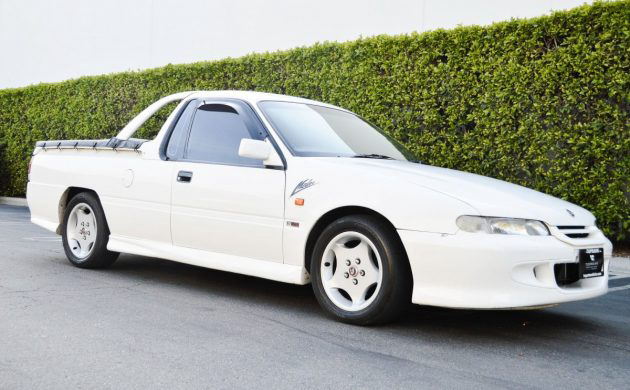
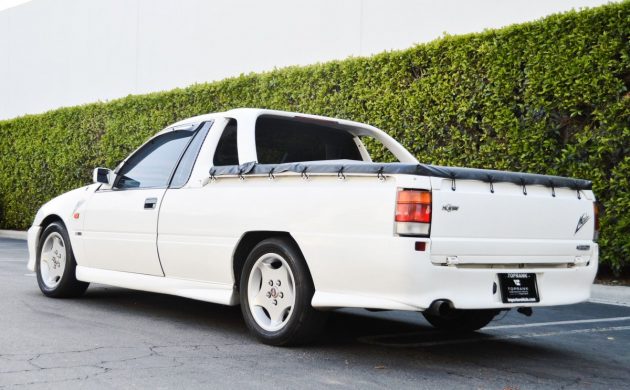
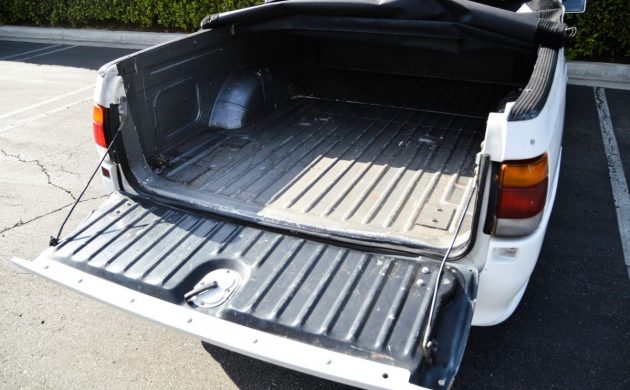
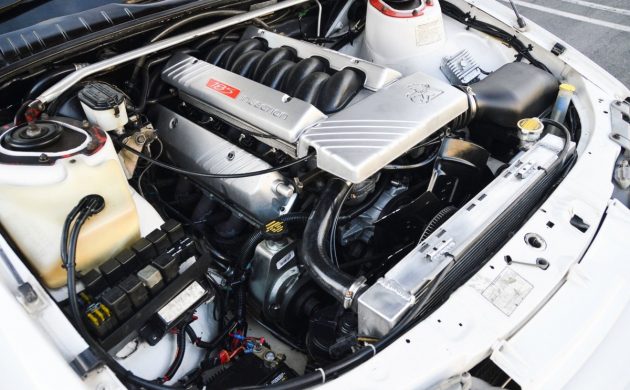
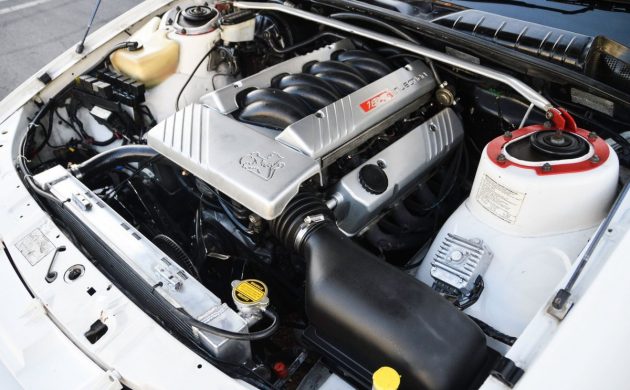
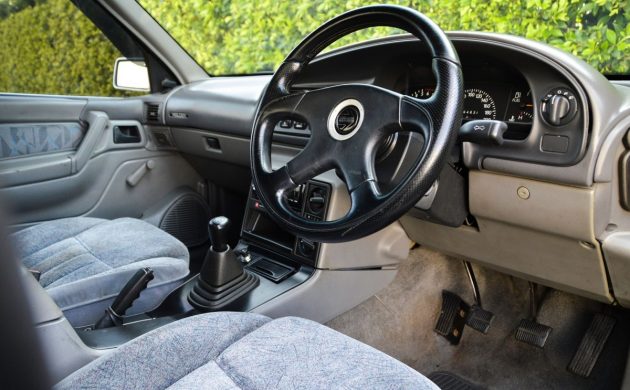






Very, VERY good write-up, Adam! Not only did you give us plenty of historical detail, but you answered what is always my first question about oddball cars: what about PARTS?
If the ask wasn’t beyond my financial reach, this is definitely a car — excuse me, Ute — I’d have to consider. Sometimes you feel the need for a car you don’t really need….
Oddball rides with clear, accurate history: this is what I come to Barn Finds for!
G’day from the USA. Sweet looking Holden ute. If only they were available here in the USA.
At least this one is!
And, thanks to the 25-year rule, I suspect more will be shortly.
If only they still made them here in Aus. 😢
My wife and I were fortunate to tour New Zealand for a month in 2000. I was of course interested in the car culture there, and when I saw these Holden Utes, I wanted to bring one home. Of course, I found out, that was not going to happen, but that love at first sight is still here.
I find it kind of ironic that this dealer is in California,
but Californians can’t purchase anything built after 1975.
If they had only started importing Holdens when GM started purging divisions. The V-8, rear drive, manual shift Commodore wagons would have sold well here I think. The Chevy SS is Holden-based, isn’t it?
Not only the SS, the Pontiac G8 and the last version of the GTO.
Before Obama killed The division, there was a Pontiac ST rolled out to auto shows.
Obama? Really?
Obama? You really don’t know what you are talking about.
No politics! Especially today.
Not politics. Merely correcting the uninformed.
Pontiac’s death had absolutely nothing to do with Barack Obama. To say so is foolish and completely uninformed.
Another of GM’s great mistakes. They put all their marbles in that crappy S truck and overlooked one of the best small trucks in the world. Then they repeated the same mistake with the Colorado/Canyon when they already had what was needed. What a waste of R&D!
I will never understand how one company can make so many bone headed moves.
GM has made so many mistakes in the past thirty years. Aztek, Fiero, GranPrix MonteCarlo Nascar models,Canyon/Colorado their Craftsman styling is the ugliest on the planet.Their current line up is hideous
A Down Under finally reviewed by a Mr Oz ! a real delight, thank you sir! A great look into the global auto industry, a tight well done one on this model/co/country’s product. No wonder ur an auto writer’n I’m a reader.
Y did Oz kick out the off shore co’s recently? R they going to go on shore all the way? Swap to EV only?
Wasss Up wid dat?
Thnx again.
Obama ordered GM to ditch Pontiac to secure bailout money. If he had his way he would have gutted GM down to Chevy and GMC. The only reason Buick is still around is the fact that it was the best selling car in China for GM. Bob Lutz said Obama originally wanted only Cadillac and Chevy to survive. Obama was a hack that squandered billions on Obama Cash trade ins that had their motors blown on purpose to keep older vehicles off the road and then they were crushed. Absolute waste of machinery as I saw numerous vintage vehicle scrapped in NE Ohio that would have made nice projects but the owners were to stupid and or brainwashed by the libs that they traded them in for “free money”
Pure, unadulterated B.S.